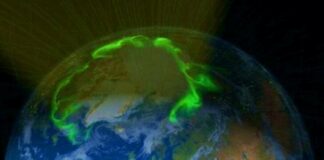
Scientists have suggested that a dark matter “hurricane” might be making its way past the Sun, and it could be detectable here on Earth.
Published in Physical Review D, the study led by Ciaran O’Hare from the University of Zaragoza in Spain looked at a collection of nearby stars moving in the same direction known as the S1 stream. These are “believed to be the remnant[s] of a dwarf galaxy that was swallowed by the Milky Way billions of years ago,” a statement from APS Physics noted.
The S1 stream consisting of 30,000 stars was found last year by ESA’s Gaia satellite, which is mapping a billion stars in our galaxy. About 30 such streams have been found in our galaxy, each the remnant of a previous collision.
S1 is particularly interesting, however, in that it is currently “blowing” past us at about 500 kilometers (310 miles) per second. And the researchers said that this may produce noticeable effects on the dark matter near us.
“Current detectors looking for weakly interacting massive particles (WIMPs) – one widely discussed form of dark matter – probably won’t see any effect from S1,” the statement noted, “but future WIMP detectors might.”
All galaxies are thought to have formed inside a large halo of dark matter, which we can’t see and doesn’t interact with normal matter. But the researchers noted that about 10 billion solar masses of dark matter – coming from the original dwarf galaxy – was traveling along S1.
Illustration of a star stream moving past our Sun. C. O’Hare/NASA/Jon Lomberg
“As the S1 stream ‘hits the Solar System slap in the face’, the authors write, its counter-rotating structure will dramatically increase the amount of dark matter appearing to come from the same patch of sky as the standard dark matter wind,” reports Cosmos Magazine.
“Indeed, it should produce a tell-tale ‘ring’-like structure around this wind, something that directional dark matter detectors… could easily detect in future.”
ScienceAlert also noted that it might be possible to detect axions from the stream, which are theoretical particles 500 million times lighter than an electron that could constitute dark matter. “[T]hese ultralight particles – which we can’t see – could be converted to photons which we can see, in the presence of a strong magnetic field,” they said.
No direct detection of dark matter has ever been made, despite numerous efforts. But perhaps this “hurricane” will provide an intriguing opportunity to do so.









